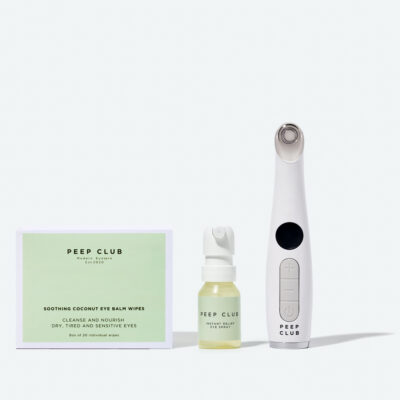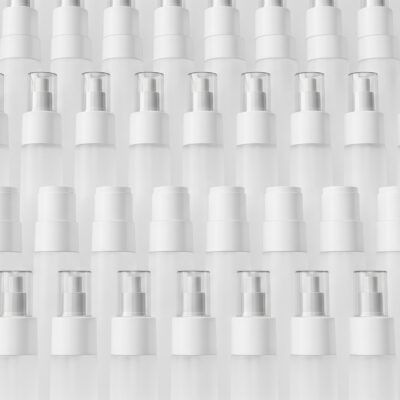
A Framework For Successful AI Integration At Time-Starved Indie Beauty Brands
The beauty industry thrives on evolution, and the biggest shift today isn’t on the shelves, it’s behind the scenes, where artificial intelligence (AI) is reshaping how brands operate. Big Beauty has already embraced AI to streamline operations, speed up product development and personalize marketing. For indie brands, the opportunity and challenge is to adapt quickly without compromising the values that define them.
Real Results, Right Now
The ROI of AI isn’t theoretical. It’s measurable, tangible and already reshaping beauty:
- Large beauty brands are recovering revenue lost to chargebacks and deductions from retailers like Target, Ulta Beauty, Sephora and Walmart, with an average 350% return and a 95% success rate.
- Procter & Gamble reported that cross-functional teams using generative AI worked 12% faster, according to a P&G and Harvard University study shared by Consumer Goods Technology.
- Unilever cut branded content production time 65% and reduced costs over 50%, according to company insights published by Marketing Dive.
- Sephora’s virtual try-on tool, powered by ModiFace AR increased online conversion rates by 35%, and Estée Lauder’s in-store AI mirror tool led to a 30% boost in basket size, according to Brand XR’s 2024 research on AR in beauty retail.
These aren’t experimental pilots. They’re operational transformations, and indie brands are beginning to tap into them as well. Renée Cosmetics implemented QuickReply.ai’s WhatsApp-based AI cart recovery tool and saw a reported 171x ROI, with a 63% conversion rate on abandoned carts, according to the Indian makeup company’s case study.
The AI Maturity Curve: How Brands Progress
Experts often group AI adoption into three distinct stages. Most indie brands are somewhere between the first and second. Understanding where you sit on this curve can help you prioritize what to do next.
Stage 1: Augmented Expertise
- Paradigm: Capability building
- Approach: Bottom up
- Reality: Teams use AI tools to boost individual productivity. Org structure stays the same.
At this phase, AI is like an eager intern—endlessly energetic, often helpful, sometimes off base. Tools like ChatGPT, Claude or Notion AI are being used to generate first drafts, summarize lengthy documents or translate captions on the fly.
But AI needs guidance. It doesn’t understand your brand ethos or regulatory constraints. It just recognizes patterns. Structured prompts, training inputs and strong oversight are essential.
Fractional experts or advisors can help configure prompt libraries, ensure compliance and establish consistency.
Tools that shine:
- ChatGPT or Claude: copywriting, summarization, translation
- Midjourney or Ideogram: concepting visuals
- Notion AI: documenting internal processes
- ElevenLabs: creating founder voiceovers and narrated content
Real-world use cases:
- Founders drafting investor decks and brand stories
- Retail associates using AI-generated client profiles
- Social teams automating multilingual captions and adjusting tone
Stage 2: Accelerated Initiatives
- Paradigm: Outcome-driven workflows
- Approach: Top down
- Reality: AI starts to drive strategic priorities. Teams organize around goals, not job titles.
Here, AI is more than a productivity boost, it’s embedded in how teams operate. Campaign timelines compress. Product testing speeds up, and marketing becomes increasingly personalized.
What this looks like:
- Creative loops replace static calendars
- Trend-based visuals are generated in hours, not weeks
- SKU planning improves with AI forecast models
- Chatbots guide product discovery
Recommended tools:
- Jasper or Writer: for brand-consistent, scalable copy
- Runway: AI-assisted video editing
- ChatGPT and Klaviyo: dynamic email content
- StyleScan: AI-generated product imagery
Team rituals that work:
- Weekly AI stand-ups across departments
- Live prompting sessions to share best practices
- Regular reviews comparing AI-augmented vs manual output
Stage 3: AI Organizations
- Paradigm: Transformation
- Approach: All in
- Reality: Org design, processes and decision-making shift to enable AI.
This is where brands rethink structure entirely. AI isn’t layered onto legacy systems, it becomes infrastructure. Roles shift, workflows are rebuilt, and experimentation becomes the norm.
What changes:
- New roles like prompt architect and AI ops lead
- Brand guidelines expand to include prompt libraries
- KPIs include time saved, speed-to-market and volume of experiments
Real-world use cases:
- Weekly AI-generated trend briefings for team alignment
- Knowledge systems that synthesize internal and consumer data
- AI-enhanced recruiting pipelines
Why Indie Brands Are Uniquely Positioned
Indie brands built their edge on authenticity, agility and proximity to the consumer. Those strengths still matter, and AI can scale them without losing soul.
“AI is happening whether we like it or not. No business wants to be left in the dust,” Alia Raza, founder of Régime des Fleurs, told Beauty Independent.
It’s worth acknowledging the challenges. For many beauty brands, the hardest part of starting with AI isn’t a lack of interest, it’s time. Teams are already busy doing their jobs. Experimenting with new tools, integrating workflows and developing strategy all require headspace, structure and skills that most organizations simply don’t have yet.
Most indie teams don’t have in-house data scientists or automation engineers. That’s why starting with no-code tools, clear goals and structured experimentation matters. This is where bringing in outside support can make a meaningful difference.
In today’s economy, many highly experienced operators have shifted into fractional or interim roles. That’s a smart place to start when looking for someone to help you build capability, lead initiatives and guide the transition.
Practical Moves You Can Make This Month
- Run a GenAI readiness workshop
- Keep it relevant. Show beauty-specific examples. Invite open dialogue.
- Audit your stack
- Where is your team still doing things manually? Start there.
- Pick one use case and test it live
- Real feedback matters more than perfection.
- Bring cross-functional teams together
- AI tools are most effective when used across silos.
- Assign ownership
- AI needs a champion, internal or fractional.
- Encourage light-touch experimentation
- Invite every team member to identify three tasks AI might improve. Allocate just 10% of their time to explore. Share learnings openly.
From Tools to Transformation
As someone who advises indie brands on digital transformation, I’ve seen firsthand how even modest AI pilots like simplifying product copy or automating image cropping can free up capacity and improve output, but only when aligned with real business goals.
Here’s a simple framework to keep efforts on track:
- Roadmap: Tie AI adoption to business goals
- Talent: Upskill or hire fractional support
- Workflow: Build flexibility into existing systems
- Tech Stack: Choose tools that scale
- Data: Structure it clearly and ethically
- Scaling: Document and replicate what works
The Bottom Line
Your competitors won’t announce that they’re using AI. They’ll just show up faster, smarter and more relevant. For indie brands, this is a rare opportunity to scale creativity, deepen personalization and build operational muscle without losing what made them beloved to begin with. AI isn’t a shortcut. It’s a strategy. Done right, it doesn’t replace human ingenuity. It amplifies it.
Kim Walls is a brand strategist, founder and fractional C-Suite leader known for building category-defining beauty and wellness brands such as Furtuna Skin and Lime Crime. With deep expertise in marketing, product innovation and AI integration, she helps companies modernize operations and scale growth. Her work spans startups to global icons, blending creativity with cutting-edge technology to meet the future of beauty head-on.




